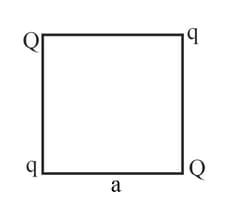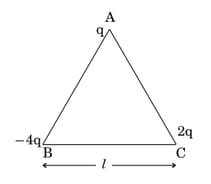Embibe Experts Solutions for Chapter: Electric Charges and Fields, Exercise 1: cbse-2020
Embibe Experts Physics Solutions for Exercise - Embibe Experts Solutions for Chapter: Electric Charges and Fields, Exercise 1: cbse-2020
Attempt the practice questions on Chapter 1: Electric Charges and Fields, Exercise 1: cbse-2020 with hints and solutions to strengthen your understanding. EMBIBE CHAPTER WISE PREVIOUS YEAR PAPERS FOR PHYSICS solutions are prepared by Experienced Embibe Experts.
Questions from Embibe Experts Solutions for Chapter: Electric Charges and Fields, Exercise 1: cbse-2020 with Hints & Solutions
Four-point charges and are placed at the corners of a square of sideas shown in the figure.

Find the resultant electric force on a charge .
Three-point charges and are placed at the vertices of an equilateral triangle ABC of side as shown in the figure. Obtain the expression for the magnitude of the resultant electric force acting on the charge .

If the point charge is moved to a distance from the centre of the square and the side of the square is doubled, explain how the electric flux will be affected.

Draw the pattern of electric field lines, when a point charge is kept near an uncharged conducting plate.
Derive an expression for the electric field at any point on the equatorial line of an electric dipole.
The identical point charges, each, are kept apart in air. A third point charge of unknown magnitude and sign is placed on the line joining the charges such that the system remains in equilibrium. Find the position and nature of .
If the net electric flux through a closed surface is zero, then we can infer
An electric dipole consisting of charges and separated by a distance is in stable equilibrium in a uniform electric field .The electrostatic potential energy of the dipole is :
